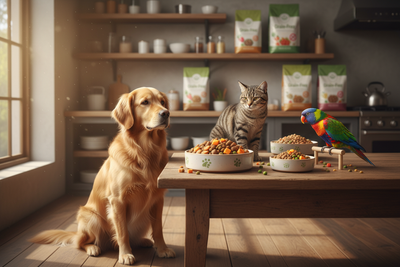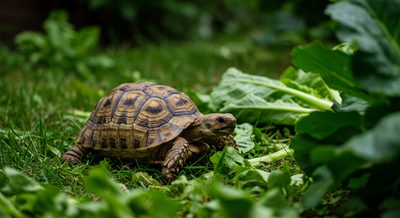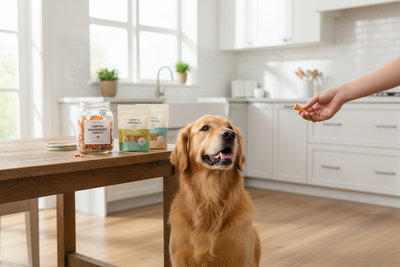
Welcome to the ultimate guide on feeding your pet leopard gecko vegetables! In this comprehensive guide, we will delve into the importance of incorporating vegetables into your leopard gecko's diet, the best vegetables to feed them, and how to do so effectively. Leopard geckos, known for their unique dietary requirements, can greatly benefit from a well-rounded diet that includes vegetables. By understanding the nutritional needs of your leopard gecko and providing a variety of vegetables, you can ensure their overall health and well-being. Whether you are a new leopard gecko owner looking for guidance or a seasoned reptile enthusiast seeking to enhance your pet's diet, this guide is tailored to provide you with the information you need to make informed decisions about feeding your leopard gecko vegetables. Let's explore the wonderful world of leopard gecko nutrition together!.
Nutritious Vegetables for Leopard Geckos
Leopard geckos are fascinating creatures that make great pets. To ensure their health and well-being, providing a balanced and nutritious diet is essential. Incorporating a variety of vegetables into their diet can offer essential vitamins and minerals necessary for their growth and vitality. Here are some nutritious vegetables that you can include in your leopard gecko's diet:.
- Leafy Greens:
-
Leafy greens such as kale, collard greens, and dandelion greens are excellent choices for leopard geckos. These greens are rich in vitamins A and C, calcium, and fiber, making them a great addition to their diet.
-
Vegetables:.
-
In addition to leafy greens, vegetables like carrots, squash, and bell peppers can be beneficial for leopard geckos. These vegetables provide essential nutrients, including beta-carotene, vitamin C, and potassium, which contribute to their overall health.
-
Occasional Fruits:.
- While vegetables should make up the majority of your leopard gecko's diet, occasional fruits can be offered for added variety. Fruits such as berries, papaya, and mango can be given as treats, providing additional vitamins and natural sugars.
It's important to remember that leopard geckos have specific dietary requirements, and not all vegetables and fruits are suitable for them. Before introducing any new food items, it's advisable to research and ensure they are safe for leopard geckos to consume. By offering a diverse and balanced diet, you can help your leopard gecko thrive and lead a healthy life.
Additional Tips for Feeding Leopard Geckos:
- Gut Loading Insects:
-
Before feeding insects to your leopard gecko, consider gut loading them. Gut loading involves feeding the insects a nutritious diet before offering them to your gecko. This ensures that the insects are packed with essential nutrients that will be passed on to your pet.
-
Calcium and Vitamin D3 Supplementation:.
-
Leopard geckos require calcium and vitamin D3 for proper bone development and overall health. Dusting their food with calcium powder or providing a calcium dish in their enclosure can help meet these needs.
-
Water Needs:.
-
Ensure your leopard gecko has access to clean, fresh water at all times. Consider using a shallow dish for water to prevent drowning accidents, as leopard geckos are not strong swimmers.
-
Avoid Toxic Foods:.
- Some vegetables and fruits can be toxic to leopard geckos. Avoid feeding them avocado, rhubarb, and citrus fruits, as these can be harmful to their health.
By following these tips and providing a well-rounded diet, you can ensure that your leopard gecko remains healthy and happy for years to come.
Precautions with Leopard Gecko Vegetables
Leopard geckos are fascinating reptiles that require a well-rounded diet to thrive. When it comes to incorporating vegetables into their meals, there are essential precautions to keep in mind to ensure your gecko's health and well-being.
-
Avoid Toxic Vegetables: It is crucial to steer clear of toxic vegetables like avocado and rhubarb when planning your gecko's diet. These vegetables can be harmful and even fatal to leopard geckos if ingested. Opt for safe options such as carrots, sweet potatoes, and leafy greens.
-
Properly Wash and Cut Vegetables: Before serving vegetables to your leopard gecko, it is important to wash them thoroughly to remove any traces of pesticides or contaminants. Additionally, always remember to cut the vegetables into small, bite-sized pieces to make it easier for your gecko to consume and digest them. This practice also helps prevent any potential choking hazards.
-
Consult a Vet for Dietary Advice: While general guidelines can offer a good starting point, every leopard gecko is unique, and their dietary needs may vary. Consulting a vet who specializes in reptiles is highly recommended to receive personalized dietary advice for your gecko. A reptile vet can assess your gecko's overall health, provide insights into suitable vegetables, recommend appropriate portion sizes, and offer guidance on meeting their specific nutritional requirements.
In addition to the precautions mentioned above, it is essential to observe your leopard gecko's dietary preferences and monitor their response to different vegetables. Some geckos may have specific likes or dislikes, and being attuned to their preferences can help ensure they receive a balanced diet that they enjoy. Remember to introduce new vegetables gradually to allow your gecko to adjust and watch for any signs of digestive issues or adverse reactions.
Furthermore, it's important to understand the nutritional value of the vegetables you offer. While vegetables are a crucial part of a leopard gecko's diet, not all vegetables provide the same level of nutrients. For instance, dark leafy greens like kale and collard greens are rich in calcium and vitamin A, essential for your gecko's bone health and immune system. Incorporating a variety of vegetables can help provide a well-rounded nutritional profile.
Additionally, ensure that the vegetables you offer are fresh and free from any signs of spoilage. Spoiled vegetables can harbor harmful bacteria that may cause digestive issues in your gecko. Always remove any uneaten vegetables from your gecko's enclosure promptly to maintain cleanliness and prevent potential health issues.
By following these precautions, providing a diverse selection of nutritious vegetables, and staying attuned to your leopard gecko's dietary needs, you can contribute significantly to their overall health and well-being. Remember, a balanced diet tailored to your gecko's specific requirements is key to ensuring they lead a healthy and fulfilling life.
Feeding Schedule and Portions
Establishing a consistent feeding schedule and appropriate portion sizes are key components of maintaining your pet's health and well-being. In this comprehensive guide, we will explore the importance of a balanced diet, the frequency of vegetable feedings, ideal portion sizes based on age and size, and the significance of monitoring dietary changes and their effects.
Importance of a Balanced Diet
- Highlight the crucial role of a balanced diet in promoting overall health for your pet.
- Discuss the benefits of incorporating vegetables into their daily meals to provide essential nutrients and fiber.
Frequency of Vegetable Feedings
- Emphasize the value of offering vegetables regularly to support a varied diet for your pet.
- Provide insights into the recommended frequency of vegetable feedings, which may vary based on your pet's species and individual needs.
Ideal Portion Sizes Based on Age and Size
- Explain how portion sizes should be adjusted according to your pet's age, size, and activity level.
- Offer practical tips on determining the appropriate portion size to prevent overfeeding or underfeeding.
Monitoring Dietary Changes and Their Effects
- Stress the importance of closely monitoring any dietary changes and their impact on your pet's health.
- Educate pet owners on observing behavioral changes, stool quality, and overall well-being to assess the effects of dietary adjustments.
Additional Considerations
- Discuss the significance of consulting with a veterinarian or pet nutritionist to create a customized feeding plan.
- Address common dietary issues such as food allergies, sensitivities, or restrictions that may require special attention.
Importance of Water Intake
- Explain the critical role of proper hydration in your pet's diet and overall health.
- Provide guidance on ensuring access to clean, fresh water at all times, especially when feeding dry vegetables that may have lower moisture content.
Nutritional Variety and Supplements
- Encourage diversity in vegetable choices to ensure a wide range of nutrients in your pet's diet.
- Discuss the potential need for supplements under the guidance of a veterinary professional, especially for pets with specific health conditions or deficiencies.
By implementing a structured feeding schedule, offering balanced portions, and remaining vigilant about dietary changes, pet owners can contribute significantly to their pet's longevity and quality of life. Remember, a well-fed pet is a happy and healthy companion!.
Conclusion
Incorporating vegetables into your leopard gecko's diet is essential for their overall health and well-being. By following a balanced feeding regimen that includes a variety of nutrient-rich vegetables, you can ensure that your pet receives the necessary vitamins and minerals to thrive. Remember to introduce new vegetables gradually and monitor your gecko's response to different types. With proper care and attention to their dietary needs, your leopard gecko can lead a long and healthy life.





